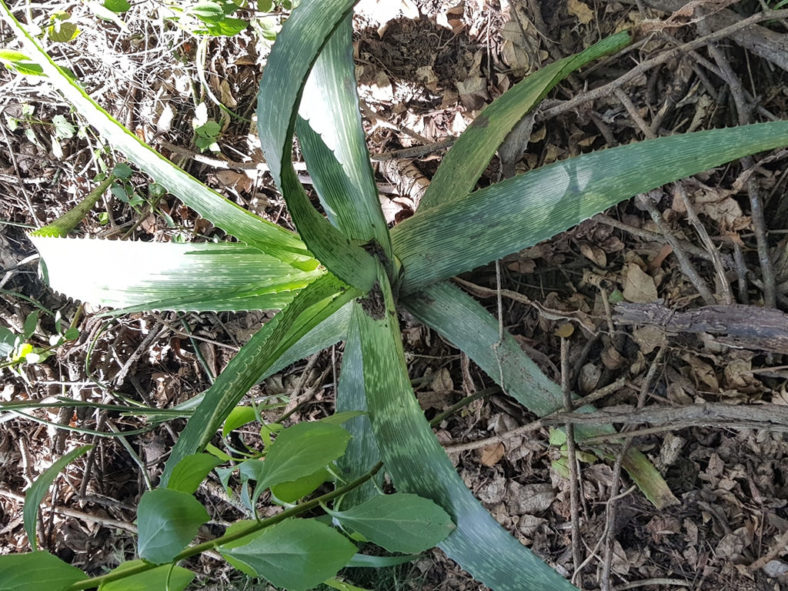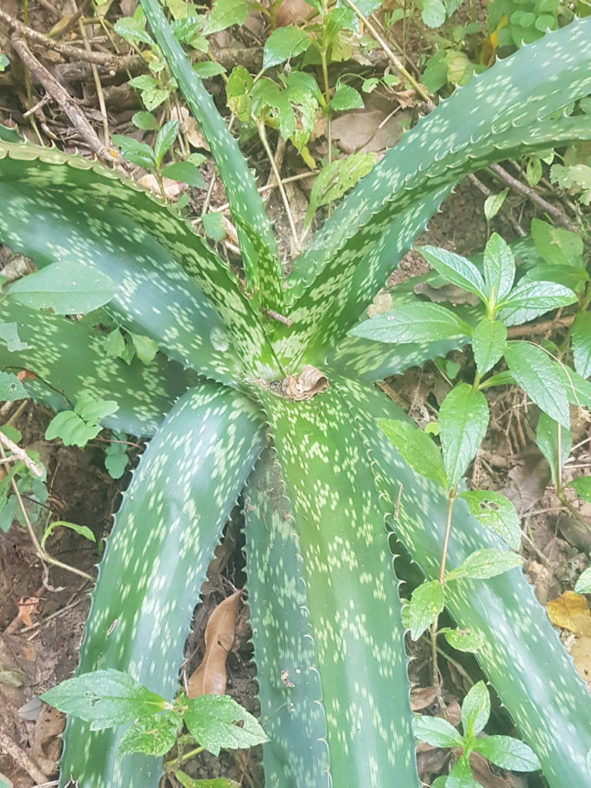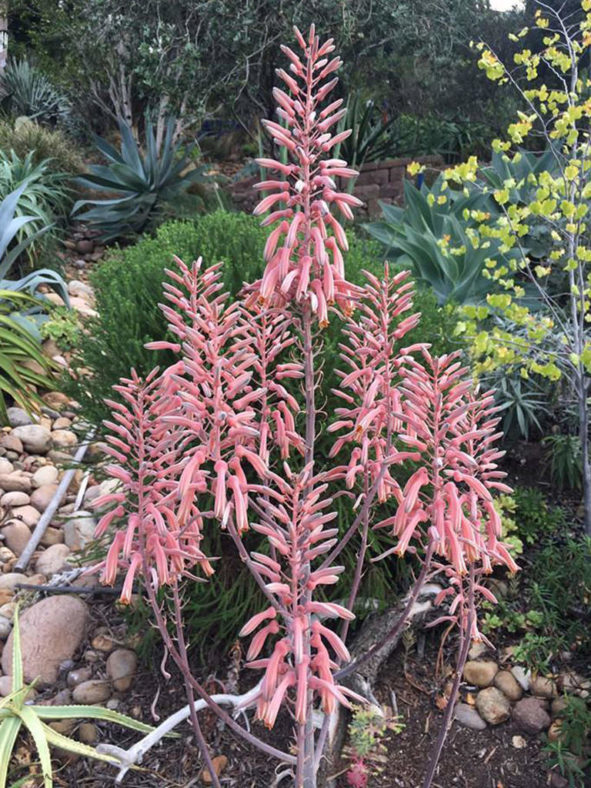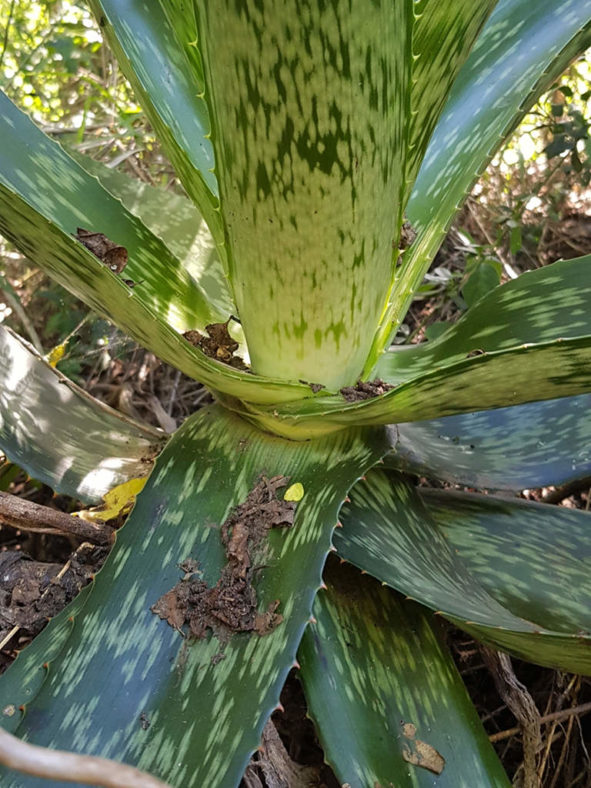Scientific Name
Aloe pruinosa Reynolds
Common Name(s)
Powder Aloe
Scientific Classification
Family: Asphodelaceae
Subfamily: Asphodeloideae
Genus: Aloe
Etymology
The specific epithet "pruinosa (proo-in-NO-suh)" means "frosty or frosted" and refers to the waxy covering on the flowers, pedicels, and peduncle.
Origin
Aloe pruinosa is native to South Africa. It occurs in the shade in the Acacia savannah in KwaZulu-Natal midlands on heavy loam in areas of fairly high summer rainfall.
Description
Aloe pruinosa is a short-stemmed succulent that forms a solitary rosette of fleshy, bright green to purplish leaves with numerous white spots and margins with pungent, pale pinkish-brown teeth. The stem can grow up to 12 inches (30 cm) tall. The leaves are lanceolate–attenuate, erectly spreading to slightly recurved, channeled, and can measure up to 28 inches (70 cm) long and 4 inches (10 cm) wide. The upper surface of the leaves has many whitish, somewhat H-shaped spots, irregularly arranged or in transverse bands, while the lower surface has more oval spots in more distinct bands.
The inflorescence can grow up to 6.6 feet (2 m) tall and branch above the middle, having about 11 arcuate erect branches. The flowers are brownish-red to darkish-pink with a greyish, powdery bloom. They can reach up to 13 inches (3.3 cm) in length and appear arranged in cylindric-acuminate racemes in late summer and fall. The racemes can measure up to 8 inches (20 cm) long.

How to Grow and Care for Aloe pruinosa
Light: When growing A. pruinosa indoors, place your plant in a window with plenty of bright indirect sunlight. Rotate the pot once or twice a week so that all sides of the plant receive equal lighting. Outdoors provide light shade, especially during the hottest parts of the day.
Soil: Plant A. pruinosa in a well-drained soil mix formulated for succulents or make your own. Drainage is essential because too much moisture around roots can cause root rot.
Temperature: This succulent grows at its best at temperatures between 50 to 85 °F (10 to 30 °C). When temperatures shift below 50 °F (10 °C), it is time to bring your plant back inside. A. pruinosa can withstand temperatures as low as 25 °F (-3.9 °C). USDA Plant Hardiness Zones 9b to 11b, 25 to 50 °F (-3.9 to 10 °C).
Watering: This succulent does need regular watering but is very tolerant of drought conditions for short periods. Water deeply, but only when the soil is dry. Cut back on watering during the winter months. Do not let water stand in the rosettes.
Fertilizing: A. pruinosa generally does not require fertilizer but may benefit from the extra nutrients. Feed with a fertilizer for succulents in spring and summer only. Be sure to follow the label directions.
Repotting: This plant is not particularly fast-growing and will only rarely need repotting. Repot it in the spring in a container a few inches larger in diameter every few years to keep it from becoming rootbound.
Propagation: Since a species with a solitary growth habit, A. pruinosa can be propagated only from seeds. For best results, sow seeds during the warm months.
Learn more at How to Grow and Care for Aloe.
Toxicity of Aloe pruinosa
A. pruinosa is not listed as toxic for people and pets.
Links
- Back to genus Aloe
- Succupedia: Browse succulents by Scientific Name, Common Name, Genus, Family, USDA Hardiness Zone, Origin, or cacti by Genus
Photo Gallery
Click on a photo to see a larger version.


